Address: 331 Smith Street Map
Opened: November 18, 1914
Architect: James Chisholm (1913); J. H. G. Russell (1923 expansion)
Contractors: Carter-Halls-Aldinger (1913 and 1923)
Background:
Olympia Café, main floor (source)
The roots of today's Marlborough Hotel go back to four Italian businessmen and a little restaurant on Portage Avenue.
Giuseppe (Joseph) Panaro and Leonardi Emma came to Winnipeg from Sicily in 1892 and operated a fruit and confectionery store on Main Street, on the present-day site of the Canadian Wheat Board Building. In 1900 the business expanded to include a restaurant.
Augustine and Joseph Badali, brothers, operated a fruit and confectionery store at the corner of Portage Avenue and Smith Street. When their premises were demolished to make way for the first Kensington Building, they reopened on the main floor of the new building. The expanded shop included a restaurant called the Olympia Cafe and soon after, new business partners, Panaro and Emma.
November 14, 1914, Winnipeg Tribune
They hired prominent architect James Chisolm and Son, who:
“...refused to be influenced by the present-day tendency to use with abandon the over-decorated and superficial styles of the French period and have followed, instead, the quiet, beautiful Gothic school of Medieval England, with just sufficient of the renaissance added to give the air of elegance and luxury common to metropolitan hotel life.”
November 14, 1914, Winnipeg Tribune
Constructed by Carter-Halls-Aldinger, the facade of the four storey structure, aside from the simple granite base, is of terra cotta. The cast iron and glass marquee features five Gothic lamps weighing one ton each and was manufactured in Elmwood by Western Steel and Iron Works.
The Gothic design carries through to the interior. The main floor features marble pillars and floors with Caen stone walls and oak paneling. Another feature is the elegant stained glass windows, three of which feature fairy tale characters such as Cinderella and the prince from Beauty and the Beast. Other features include large hanging lamps by Tiffany and Co. of New York.
The main floor and mezzanine housed the administrative offices of the hotel, including the telegraph room and switchboard. It was also home to the main lounge, a ladies’ reception room, dining room and bar. Retail services included private phone booths, a barber shop, and a news and cigar stand. There was a more informal grill room in the basement accessible via a marble staircase.
Top: Folger in 1912 (source)
Bottom: September 26, 1914, Ottawa Journal
Bottom: September 26, 1914, Ottawa Journal
The investors did not take a chance on the management of such a fine hotel. They hired A. T. Folger who had been the manager of Ottawa's Chateau Laurier since it opened in 1912. Folger, a "charming" native of North Carolina, and his wife arrived in the city just days before the Olympia's grand opening at 2:00 p.m. on November 18, 1914.
The timing could not have been worse. When first envisioned in 1912, Winnipeg was enjoying the most prosperous year in the city's history. Money and luxury were no object, as reflected in the hotel's $900,000 price tag, (about $19 million in 2014 dollars). Compare that to the $1.5 million that the Hotel Fort Garry cost just two years earlier, funded by a deep pocketed national railway.
The following year, however, Winnipeg fell into a recession which deepened with the start of the First World War. The war also immediately shrank the market for luxury travel and extravagant events. The city's other top hotels, the Fort Garry and Royal Alexandra, both owned by railways, could at least funnel their steady stream of train and ship passengers into them at lower rates to fill rooms. For a stand-alone such as the Olympia, that option didn't exist.
May 28, 1915, Winnipeg Tribune
Newspapers did not often report on the ongoing bad news of large advertisers. The first cracks, though, appeared in an April 1915 Free Press report that Folger had tendered his resignation back in February. He refused to discuss the reasons why, but confirmed that he would stay on until the end of April so that a successor could be appointed.
It turns out that a successor would not be needed. In a single paragraph story in the Free Press on May 5, 1915, it was reported that creditors had stepped in the week before and tried to attract additional investors or new buyers. There were none to be found, so it was agreed that the hotel would cease operations immediately. (A news story five years later noted that only one payment had ever been made on the building's $350,000 mortgage.)
The creditors tried to salvage what they could by selling off the building's furnishings at pennies on the dollar. A sign of how bad things likely were for the hotel: some of the bedroom suites were advertized as "never been used".
The war may have been the final nail in the coffin for the Olympia, but it was also its salvation for the creditor, (the Great West Securities Co.). The federal government was desperately seeking space to house soldiers who came to Winnipeg from across the region. The Olympia, with its large rooms, dining facilities, meeting space and close proximity to both train stations, was a perfect fit.
Many young, single soldiers gave up their apartments when they enlisted. As a result, dozens of war dead list "The Olympia Hotel" as their final address.
Top: February 19, 1919, Winnipeg Tribune
Bottom: February 23, 1919, Winnipeg Tribune
The government vacated the building in 1918 and the following year it was leased to local hotelier John Lee for about $10,000. Lee had a long history of owning and managing hotels in the city, including the National and the St. Regis.
Other services such as the restaurant and barber shop reopened and the hotel was back in full swing.
Top: December 23, 1919, Winnipeg Tribune
Bottom: December 30, 1919, Winnipeg Tribune
Lee remained at the Olympia until December 1919 when Thomas Babin took over for a period of a few months. Babin pushed the food and entertainment side of the business, introducing after theatre suppers and dances, masquerade balls, Sunday afternoon concerts and daily meal specials in all of their restaurants. The Olympia soon became home to a number of large conferences and banquets.
In March 1920 it was announced that architect J H G Russel had been hired to draw up a five storey addition to the hotel, (a further sign of how bullish the original owners were, the building was constructed with such an expansion in mind.) Carter-Halls-Aldinger returned as the contractor.
July 9, 1921, Winnipeg Tribune
It was originally thought that the hotel could remain open during the $600,000 expansion, but soon after the work got underway in the spring of 1921, it became apparent that it would have to close as new elevators and mechanical areas had to be added to the original structure. The hotel closed on June 15, 1921.
Seventy men worked on the reinfriced concrete addition which is clad in Fort William corduroy red brick with Bedford stone trim. The main feature of the addition was the eight floor 50 x 52 foot banquet room (called Marlborough Hall) with its own kitchen and an adjoining 50 x 40 foot concert room called the Blue Room. The two spaces could be opened into each other for large events.
Ralph H. Webb (source)
While construction was underway, Col. Ralph Webb, manager of the Windsor Hotel in Montreal, was hired on. Webb had lived in Winnipeg from 1906 until he left for the war. It was a fortunate hire as Webb became a huge booster of the city and, just two years later, its mayor !
It was also announced that when the hotel reopened, it would have a new name: The Marlborough.
July 10, 1923, Winnipeg Free Press
The new hotel boasted 230 bedrooms, each with its own bath. One feature that never was constructed was a planned rooftop garden restaurant.
As soon as it opened, The Marlborough became one of Winnipeg's premiere hotels for conferences, banquets, concerts an other special events. The dream that Panaro, Emma and the Badali brother had in 1912 had finally come true.
It appears that Great West Securities Co. sold the building the year after the expansion. Whether that was planned, a way to finally recoup the 20 years of lean years and losses, or due to the late opening, it's not clear.
In 1925 the hotel was the site of the conference that created the Royal Canadian Legion. A number of local organizations, from the Winnipeg Board of Trade to the Winnipeg Press Club had their headquarters there.
Bottom: April 5, 1957, Winnipeg Free Press
Through the 1950s the hotel industry began to change. Old world charm was giving way to "motor hotels" with their easy-access parking and rooms that featured modern amenities like air conditioning and full bathrooms. The Marlborough decided that it would give customers the best of both worlds.
In 1956 Libling Michener and Associates was hired to design a $1.85 million dollar expansion. the first phase was a new, self-serve parkade that opened right across the street in April 1957. At the same time, work got underway on an eight storey addition to the north of the old hotel.
Marlborough Hotel postcard ca 1960s
The new wing opened on February 4, 1960. It introduced the Skyview Ballroom which, combined with the adjoining Marlborough Hall, made the hotel the largest conference centre between Toronto and Vancouver. At the gala opening, Winnipeg ex-pat and Canadian singing icon Juliette performed.
With the "new" hotel, came new management. David Rothstein was appointed president and general manager of the ownership group while Kenneth Belyea, former general manager of the Ritz Towers in New York City, became the manager.
In 1990 the German Canadian Congress purchased the hotel for a rumoured $5.5 million, with the intention of turning it into a seniors home. When government funding fell through, the hotel closed briefly in August 1992. It soon reverted back to its original owners and reopened as a hotel.
In 2000 the hotel purchased the closed Garrick Cinema to the east and converted one of the cinema spaces into a waterslide and swimming pool.
Related:
My photo album of the Marlborough Hotel
Our History The Marlborough Hotel
331 Smith Street Heritage Building Committee
331 Smith Street Winnipeg Building Index
321-331 Smith Street Winnipeg Architecture Foundation
Marlborough Hotel 95th Birthday West End Dumplings
100 year celebration Marlborough Hotel
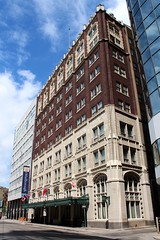
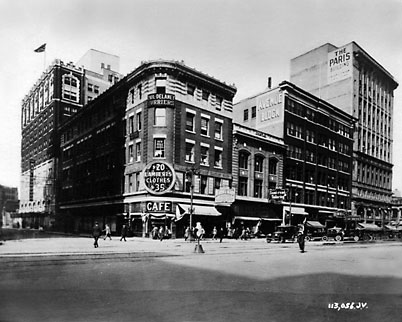


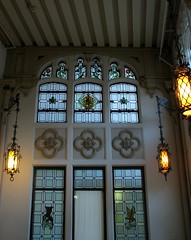












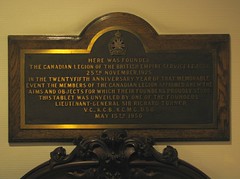


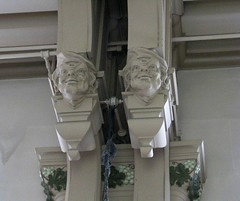
No comments:
Post a Comment